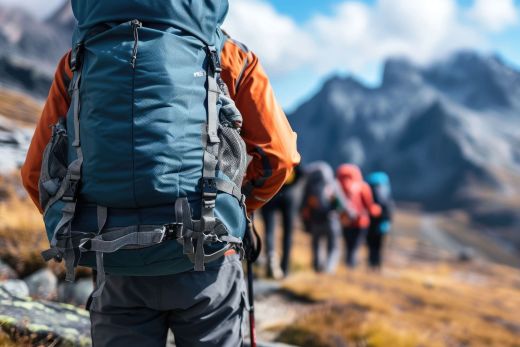Day hikes are fun, but backpacking takes the wilderness experience to another level. More days on the trail means more scenery, more adventure, and more stories to share with friends when you get home. But multi-day hikes come with their own challenges. Backcountry trails put hikers farther from help if things go wrong, and backpackers need to be more prepared and self-reliant than day hikers. Hone the following fifteen skills, and you’ll be better prepared to handle these challenges and enjoy the experience.
1. Planning
You’ve probably already heard this: proper planning prevents piss poor performance – wise words, especially when you’re talking about preparing for a backpacking trip. Without doing your homework, you might end up hiking in the storm of the year or abandoning a hike on account of trail closures (done that myself). To give yourself the best chance of success, it’s essential that you do thorough research and anticipate any problems. The following five points are a good starting point for any pre-trip checklist.
- Map
- Permits
- Weather forecast
- Current trail conditions
- Condition and location of water sources
Lastly, remember to let someone know where you’re going and who to call if you’re not back by a certain time.
2. Feeding yourself on the trail
When choosing food for a backpacking trip, it helps to think in terms of calorie-to-weight ratios. Freeze-dried meals, home-dehydrated meals, and dry food like pasta, couscous, and quinoa will give you the most energy per gram. You’ll need 2,500 to 4,500 calories per person per day depending on the size, weight and exertion level of the individual. Of course, you can’t sustain yourself on starch alone. You’ll need to add some protein (cured meat or soya mince) and yum (sauce or spices) to go with your main meal if it’s not store-bought. You’ll also need some snacks to keep energy levels up during the day.
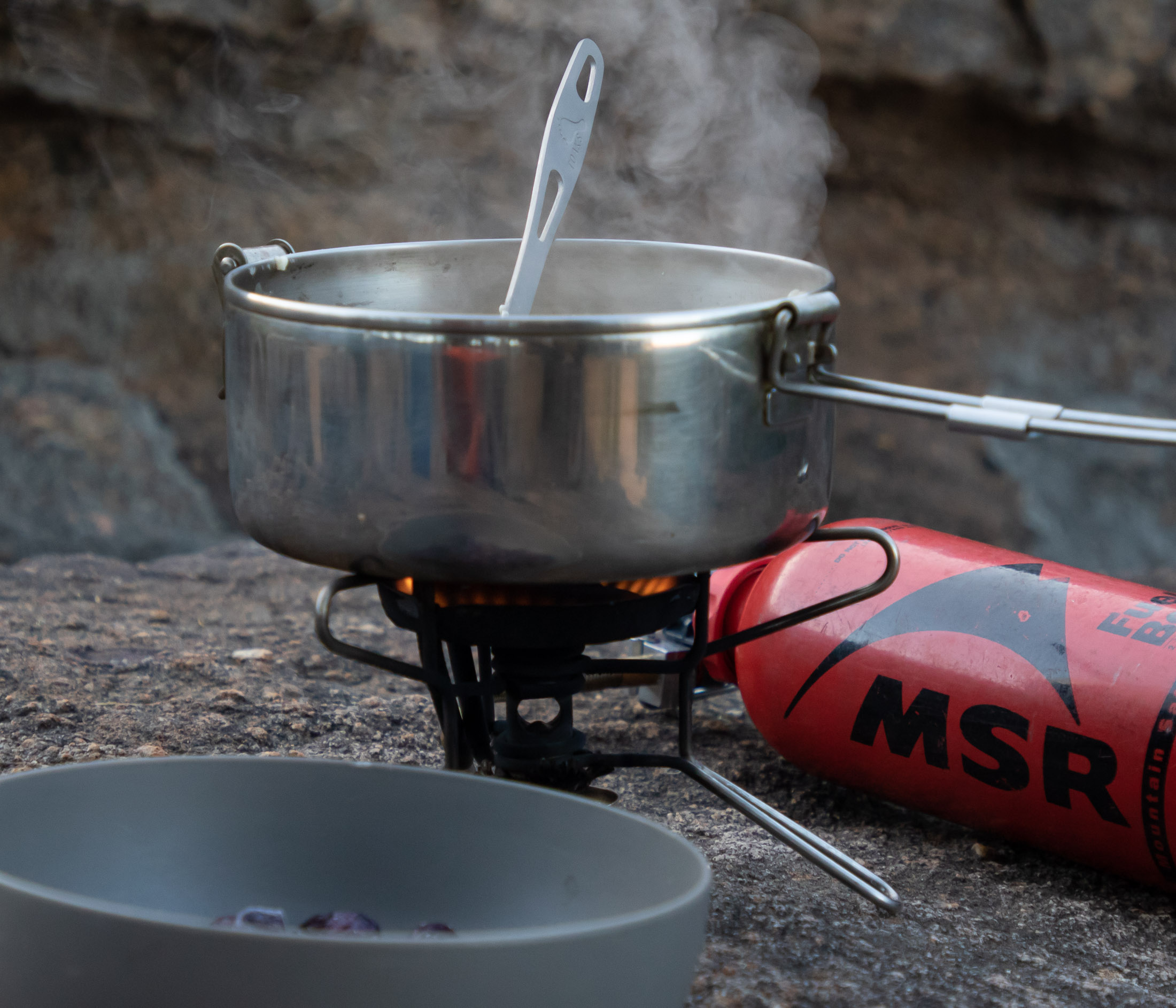
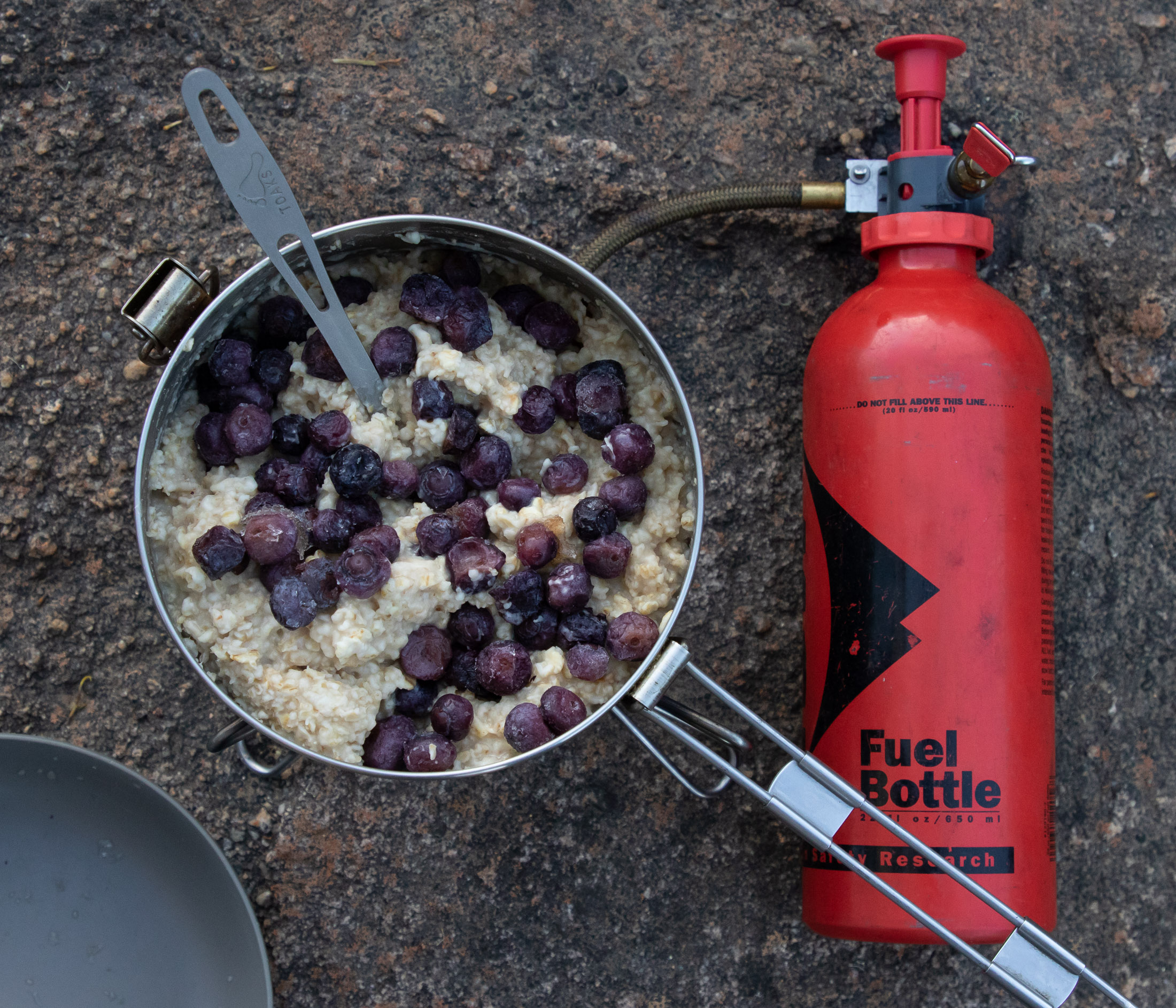
For this purpose – snacking – a mix of nuts, dried fruit, bars and candies will provide a more steady supply of energy than any single fuel source, although energy bars get pretty close to perfect as far as trail snacks go. A good trail bar will taste great, be resistant to melting, and contain a good mix of fat, protein and carbs. If you plan to hike in bear country, these should go into a bearproof container(see section on keeping food away from animals) along with all other food.
3. Washing clothes
If your hike lasts more than three or four days, you might want to wash your clothes, but how do you do that without the convenience of a laundromat (an option if your hike takes you through a town)? The solution is to use a dry bag. A good dry bag will be as good at holding water as it will be at keeping moisture out, and doing the laundry can be as simple as putting your clothes in the bag half full with soapy water, sealing the bag with some air inside it, and giving it a good shake (at least a few minutes). Repeat with clean water to rinse. A special note about soap: only use Wilderness Wash or a similar biodegradable soap, and then always dispose of your soapy water at least 60 meters or 200 feet away from water sources.
4. Packing your backpack
How you pack a backpack can make the difference between a hike you remember for the scenery, and an ordeal you remember for the pain and suffering. To avoid the less desirable of these two types of experience, take your time ensuring that your backpack is packed properly:
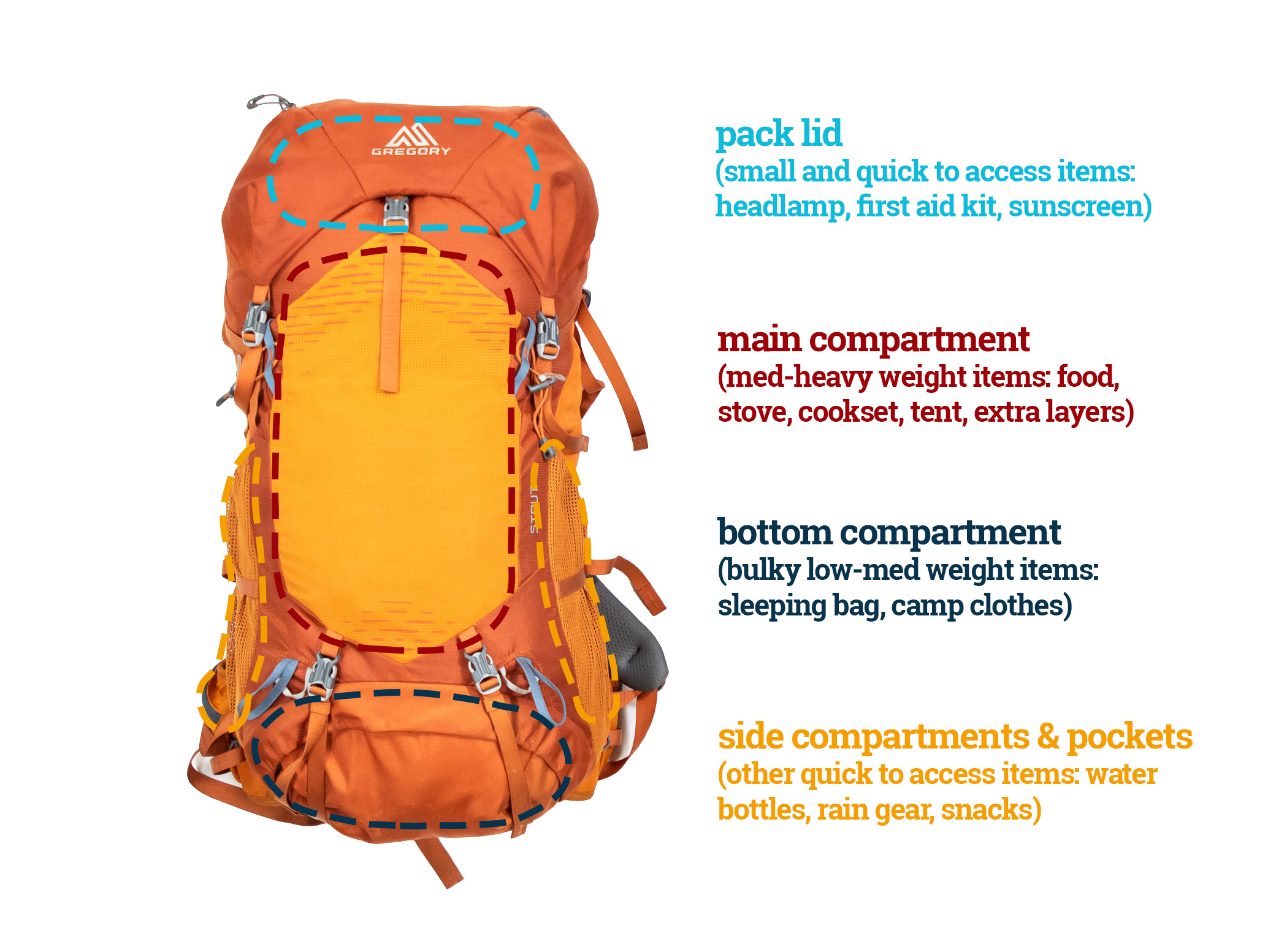
Much like Tetris, it takes some skill to get an assortment of irregularly shaped objects into a pack only just big enough to accommodate your kit, but my article on how to pack a backpack can give you a straightforward method for making the whole process easier.
5. Answering nature’s call
If your campsite doesn’t have a toilet, going to the loo can be less straightforward than you’re used to. In most cases, your easiest option is to dig a cat hole and bury your poop. Using a cat hole is as simple as finding a suitable location (60 m or roughly 80 steps from any water), digging a 15 cm by 15 cm (6 in) hole, and making your deposit. Afterwards, you just cover it up with the excavated dirt and leave some kind of sign to mark the place as the final resting place of your departed dookie. Since it’s becoming less and less common for land managers to allow the burying of toilet paper, you should be prepared to pack it out. Actually, even if it's not required, it’s best to pack out your TP. I explain how to do this ‘safely’ in my article How to Poop in the Backcountry.
7. Navigation skills
Smartphones and GPS’s can make navigation easier, but there is a risk in relying solely on technology. You can find yourself in a tough spot if your GPS battery dies or you lose cell phone signal. Traditional orienteering techniques, on the other hand, only require you to identify two landmarks (one must be a point) to pinpoint your position on a map. My article on how to use a map and compass explains exactly how this method – using only a few identifiable features – can be used to calculate your position. In an age where most people have learned to rely on electronics, these skills can mark you as a consummate outdoorsman.
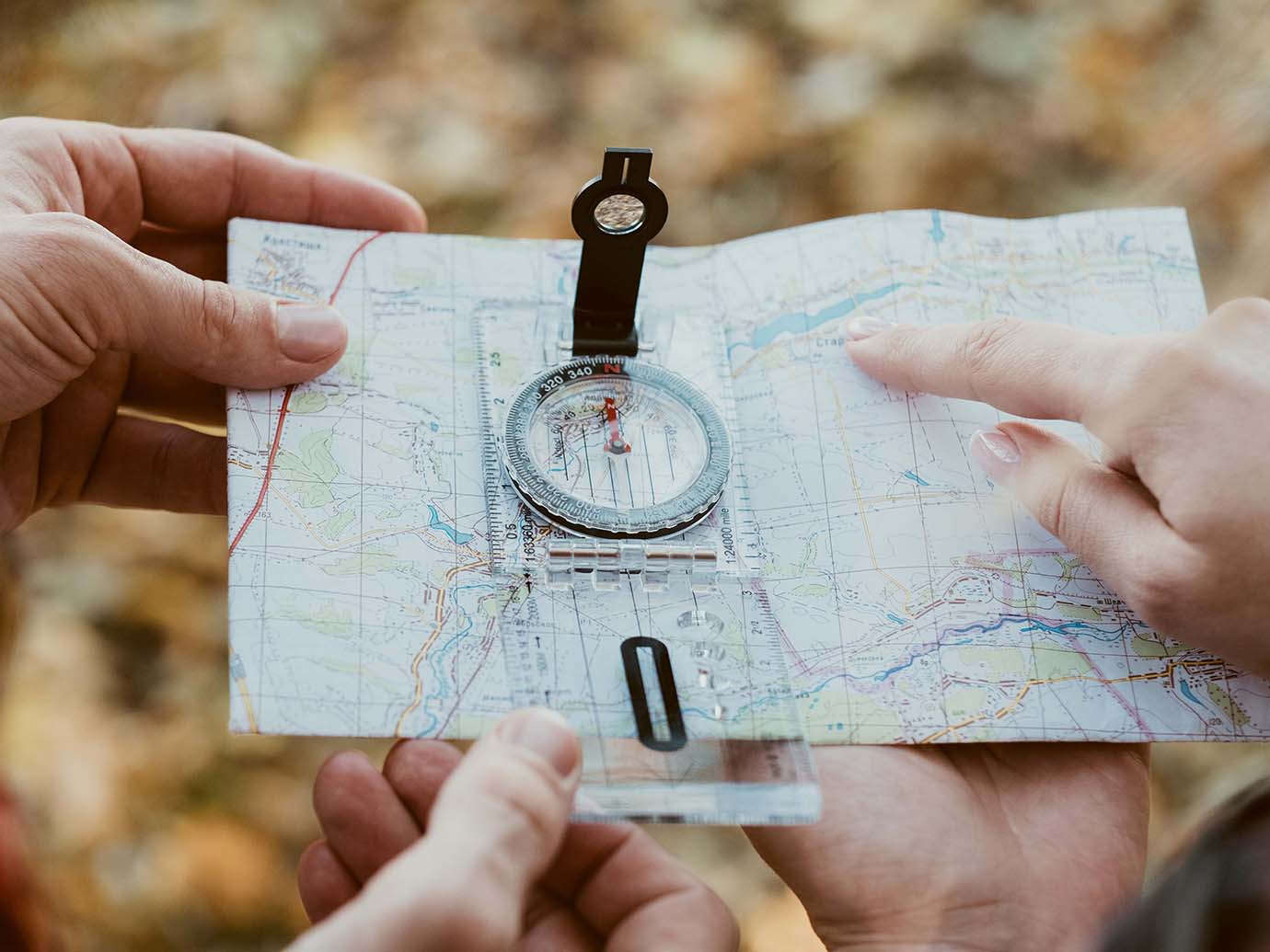
8. Prevent blisters & chafing
Hiking miles of trail with a full pack will take its toll on your body. Your feet, hips and groin area are particularly susceptible to blisters and chafing. The single biggest contributor to chafed, raw skin is sweat. Regardless of whether contact is skin-on-skin or fabric-on-skin, friction and abrasion are greater when there’s moisture. Luckily, you can reduce sweatiness and friction by taking a few preventative measures: wear quick-drying synthetics or merino wool instead of cotton; use tape or balm (like BodyGlide) on high-friction areas; and untuck your shirt to stop it acting as a wick between your back and your underwear.
9. Ensuring a taut pitch
When the wind comes up, a poorly pitched tent or tarp will threaten to fold in on you and keep you awake with loud and incessant flapping. You can avoid all this unpleasantness by ensuring that your shelter is properly tensioned during the initial pitch. Taut guylines are particularly important for tarps and freestanding shelters, which rely solely on their guylines (and not bowed poles) for structural strength. Of course, every shelter is pitched differently, and the only way to get this right consistently is to practice, even at home if you can.
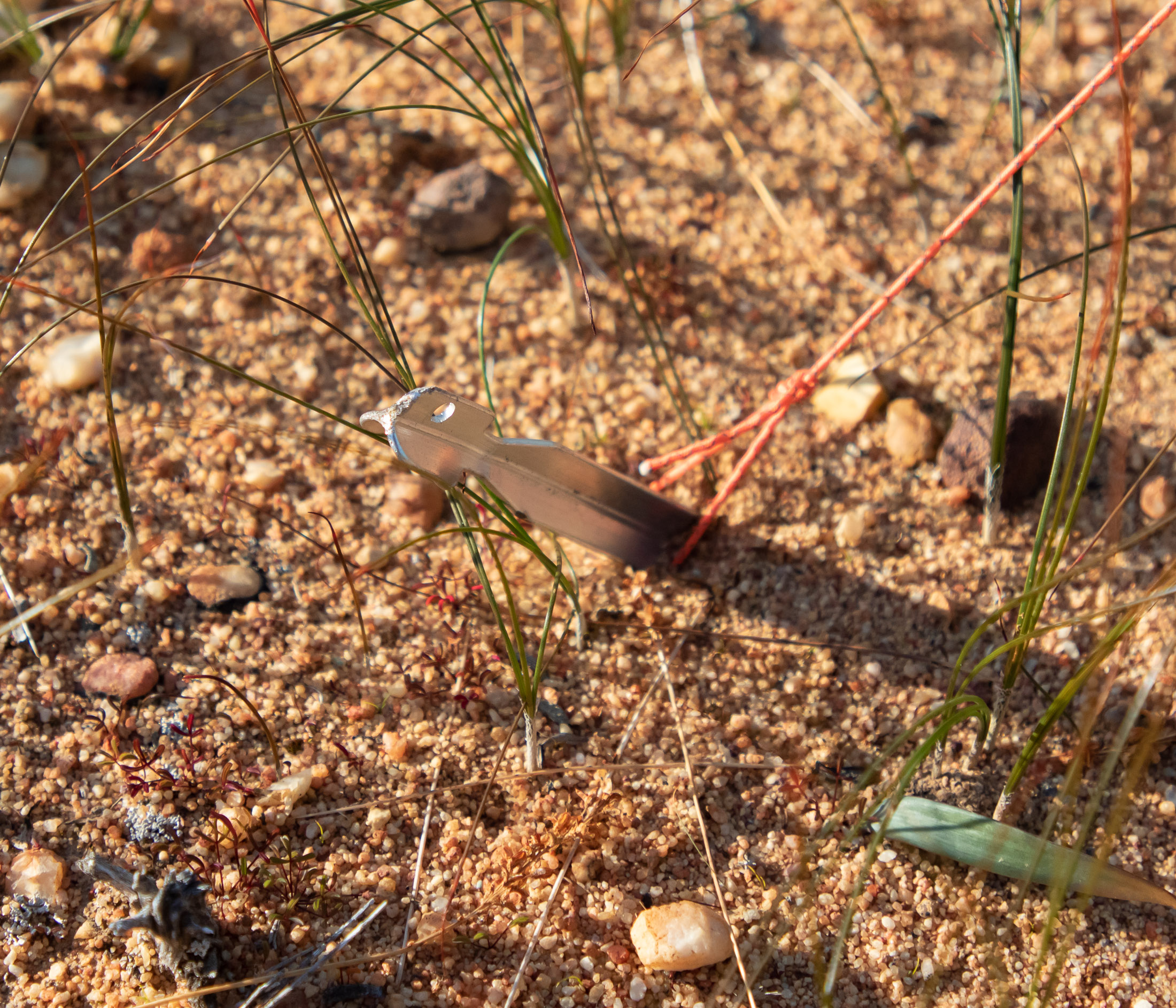
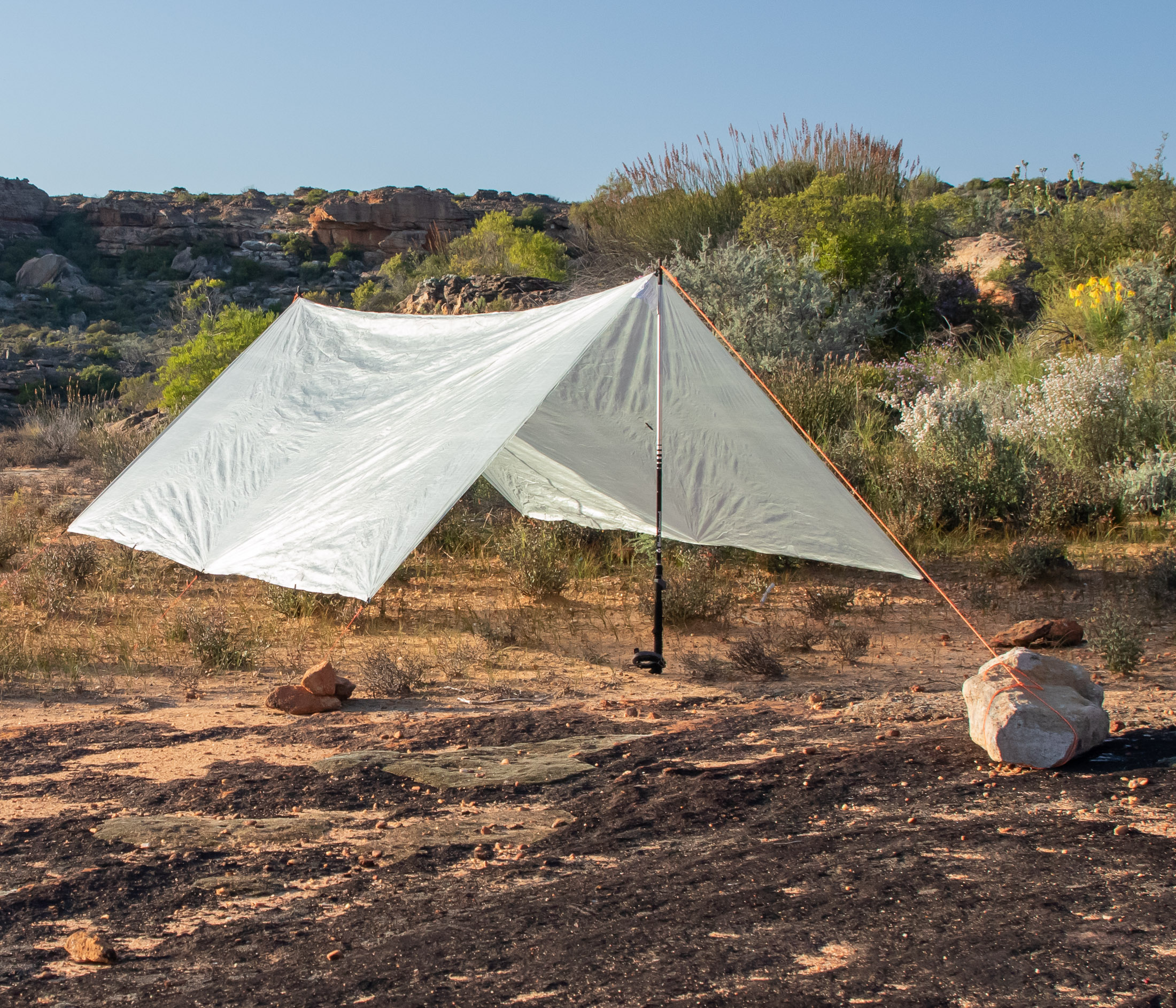
10. Choosing a campsite
Take your time and choose a campsite carefully. A well-chosen site can make the difference between a good night’s sleep and cold, wet misery. The best location will differ according to conditions (described in the article linked to above), but there are at least five cardinal rules that you should always follow when selecting and establishing a campsite.
- Adhere to camping regulations
- Avoid valley bottoms and low lying areas (damp and susceptible to flooding)
- Avoid mountain tops, high ridges, and lone trees (lightning risk)
- Pitch you tent on level ground
- Leave No Trace
The other thing you can do to improve your pitch is upgrade your tent stakes. This can be especially worthwhile if you need solid holding power (as you do with freestanding shelters) but are still using skinny hook stakes. V-shape and tri-beam stakes will generally perform better in a wide variety of soil types.
11. First Aid
If you or a hiking partner is injured or incapacitated by illness, you could be miles or days away from professional care. In such cases, some basic wilderness first aid can go a long way to ensuring a successful extraction (not dying or wishing that you were dead). Start by learning how to splint a broken limb, treat someone for heatstroke, and dress a burn or wound. Besides these more serious affiliations, it also pays to be prepared for the stings, cuts and minor burns more commonly suffered by hikers. A properly stocked first aid kit is an indispensable hiking companion.

12. Keep warm and dry
You don’t need to hike through a rainforest to risk becoming cold and wet. You can get soaked just by working up a sweat and, in that way, find yourself fighting off hyperthermia when just six hours earlier you were trying to prevent heat exhaustion. There’s a science to controlling heat and sweat retention, and knowing what to wear and how to layer it is the first step to staying warm and dry on a hike. Once in camp, you should make sure that wet gear stays outside the tent and that you have an insulating layer between you and the ground (sleeping bags with insulating fill are generally better) when you decide to rest them weary bones. But these are just a few of many things you can do to ward off the cold and wet.
13. Collect and filter water
On a summer hike lasting several hours, you might need to drink as much as 800 ml (27 oz) every hour. That could work out to over six litres over eight hours. You don’t really want to carry all that around with you unless you absolutely have to. It’s far preferable to fill up at water sources during a hike. But natural water sources aren’t without their hazards, and even a crystal stream can harbour harmful bacteria and other little nasties. To ensure that your water is safe to drink, it’s recommended that you also filter water collected in the backcountry, and in some instances you might feel the need to take the extra precaution of purifying it with chemicals or a UV purifier. For more detailed information on both filtration and purification, see my guide to treating drinking water in the backcountry.
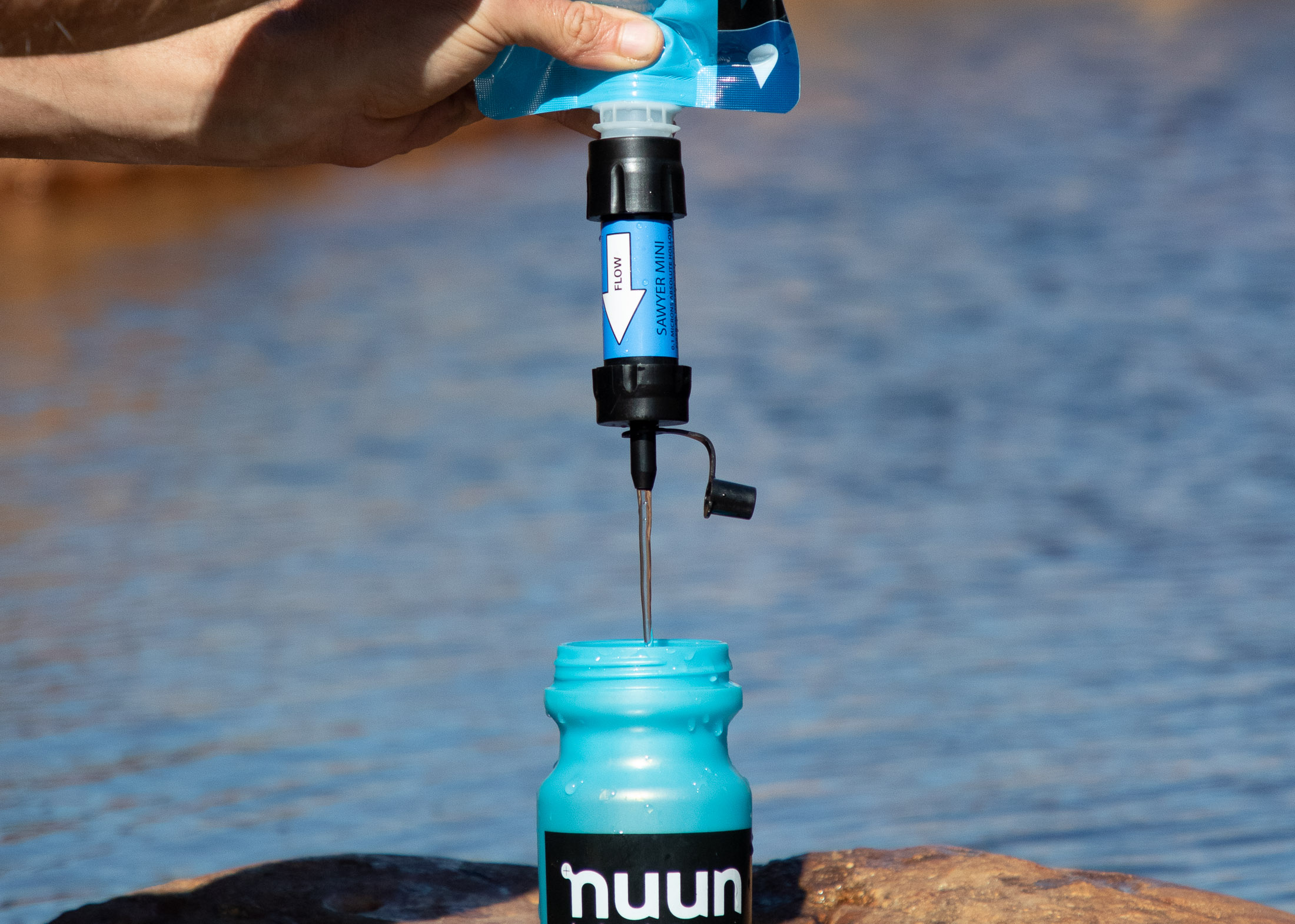
14. Keep food out of reach of animals
Bear bags, which are traditionally hung from trees, aren’t actually a great defence against animals that can climb trees and chew through rope. When hiking in areas frequented by bears, rather store your food in a bearproof canister like the BearVault BV500 or a bearproof sack lined with an odour-proof plastic bag like an Loksak Opsak. In areas where you expect to find rodents but no bears, hanging your food from a branch can still be an effective way of keeping your food safe. Remember to keep food out of reach of animals at all times (whenever not on your plate and right in front of you).
15. Make a fire
In an emergency situation, a fire can thaw out frostbitten toes and send a signal to rescuers. But when things haven’t gone awry, a campfire is more commonly used for cooking, brewing coffee, and creating the kind of ambience that inspires romantic souls to search the night sky for answers to the meaning of life (and other such life-affirming signs). But making a fire from wood collected around your campsite is not as easy as making a fire with store-bought firewood. Wood that is even just a little wet needs more encouragement to burn, and an expert firemaker needs to know how to use backwoods firemaking techniques to get a wilderness campfire going.
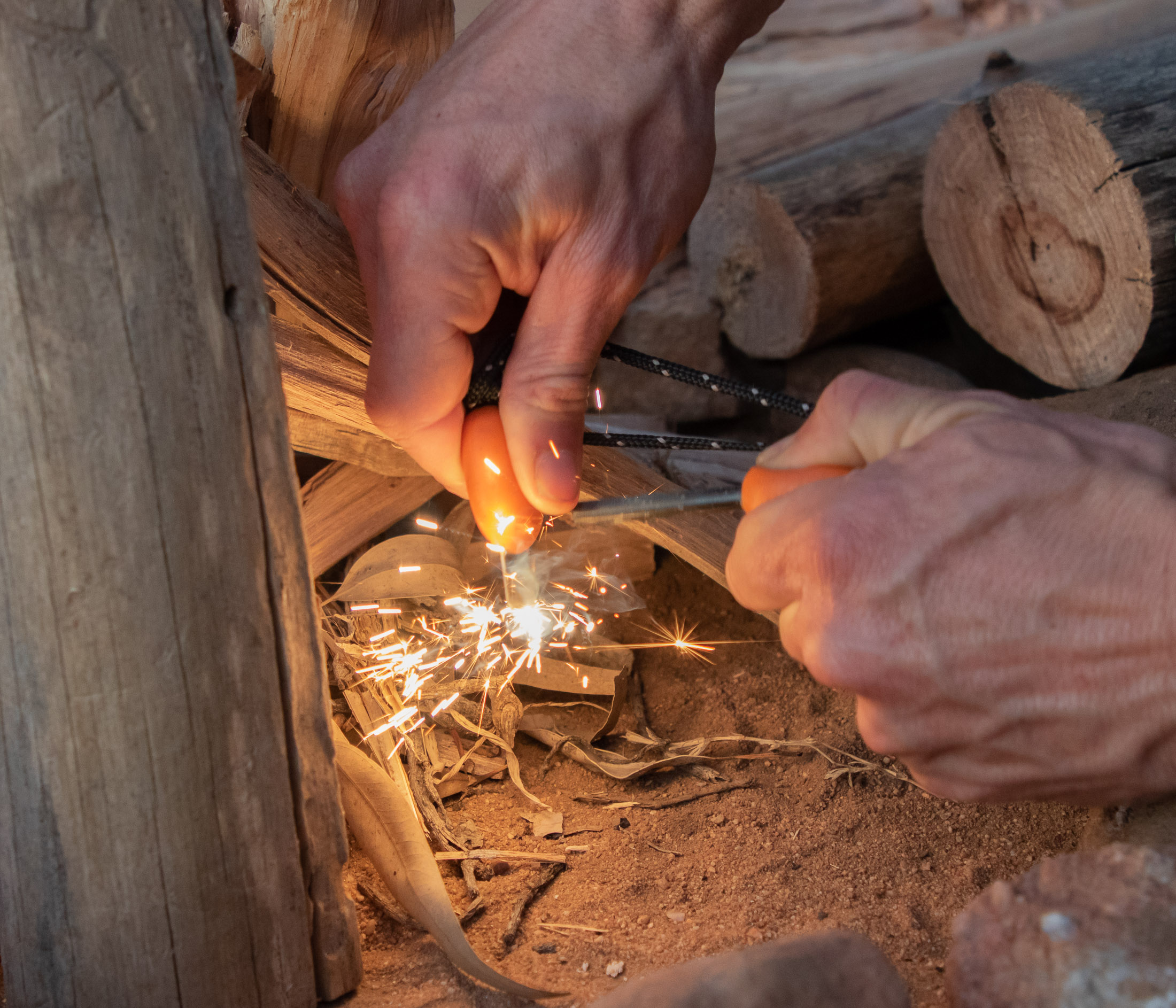
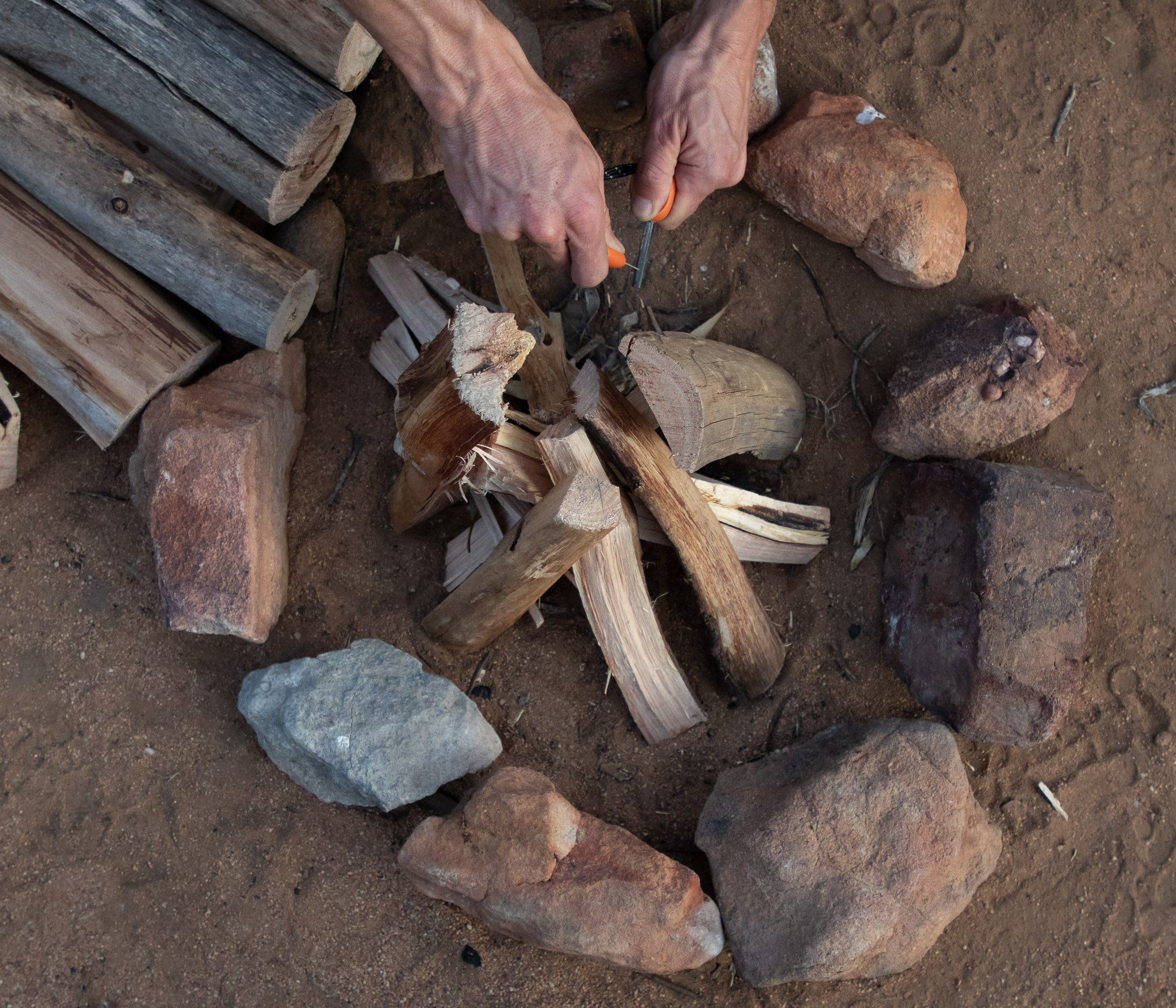
Leave No Trace
I was going to list this as one of the 15 skills, but you should actually practice the Leave No Trace principles in everything you do. Some of you might ask what are the Leave No Trace principles? To lessen the effect of more outdoor users on our wilderness areas, the global outdoor community has taken it upon itself to promote seven principles designed to give our natural spaces the respect they deserve. It’s an uphill battle but one that has been fought zealously by conscientious trail users everywhere. To be part of the solution, familiarise yourself with these principles and then put them into practice.
- Travel and camp on durable surfaces
- Pack out all your trash
- Dispose of human waste properly
- Avoid the contamination of water sources
- Minimise the impact of campfires
The best way to hone your backpacking skills is to get out there and put them to work. Only the wilderness will really test your outdoor skills. That said, if it’s further instruction you’re after, You’ll find many more pointers, practical tips, and valuable insights under the hiking and running section. Happy exploring.
